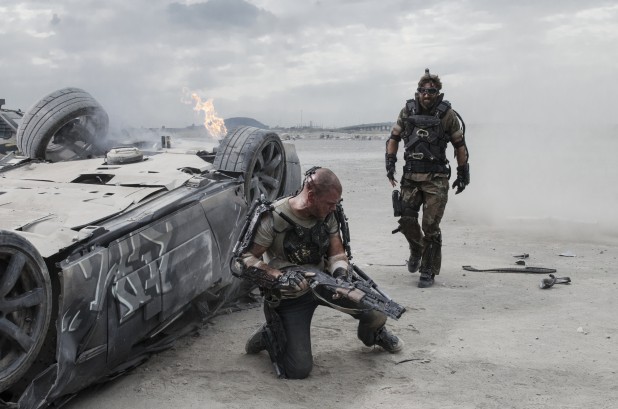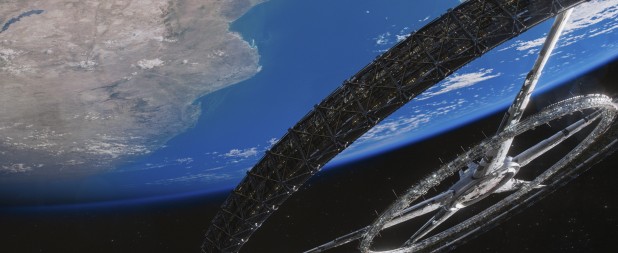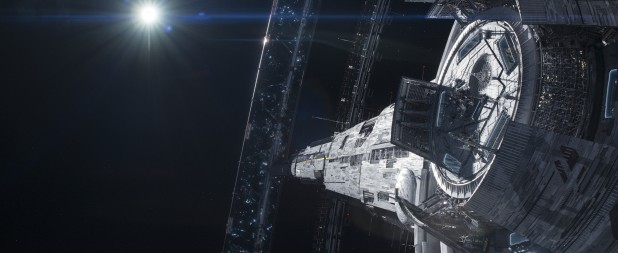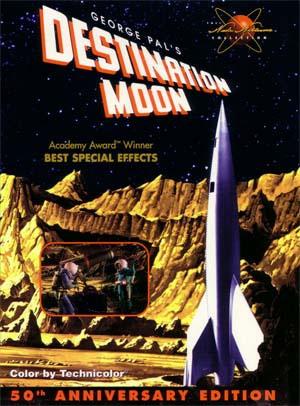[caption id="attachment_11432" align="aligncenter" width="618"]

Matt Damon (l) and Sharlto Copley (r) have a reasoned discussion about inequality. Just kidding, they spend the whole movie shooting at each other.[/caption] The new movie “Elysium” might be set nearly 150 years from now, but its plot is as old as money: the rich get richer, the have-nots continue to have not, and something in that dichotomy is going to give way—in this case, with several large explosions and lots of gunfire. In director Neill Blomkamp’s vision, Earth a century and a half from now is an overtaxed slum, low on niceties like clean water and riddled with crime and sickness. The ultra-rich have abandoned
terra firma in favor of Elysium, an orbital space station where the champagne flows freely and the medical care is the best possible. That last detail is particularly important to Max (Matt Damon), who has five days to live after a nasty industrial accident. Bolted into a crude exoskeleton that augments his strength, he launches a plan that’ll take him to Elysium and its healing technology—if he can survive the military droids and other threats (including a psychotic security agent played by
District 9's Sharlto Copley) that the One Percent has placed in his way. [caption id="attachment_11431" align="aligncenter" width="618"]

Elysium.[/caption] Yes, many of those plot elements are fantastical—but a lot of very smart people have been thinking about things like
Stanford torus space stations as far back as the 1970s. In theory, it’s possible to take Beverly Hills and transport it several miles above the Earth, so long as the government or conglomerate doing the building can mine materials from the moon (and maybe some nearby asteroids), devise shielding to block the station from floating debris and radiation, and figure out an adequate resupply system. You know, the little things. (Blomkamp hints that ultra-rich neighborhoods such as Beverly Hills were the inspiration for Elysium’s look: “Very big, ostentatious houses with palm trees and lawns. Lawns are very important. Never underestimate lawns,”
he told the Los Angeles Times.) The question is, luxury amenities or no, how long could someone realistically live on an orbital space station before radiation and the lack of gravity cause serious bodily harm? Human beings can adapt to orbit “for short-term periods of six months for a year,” with crews often doing six-month rotations on the current International Space Station, according to Mark Uhran, former director of the International Space Station Division at NASA headquarters. “But what happens if you go for two or three or ten years?” he asked in an interview with Slashdot. “Nobody knows the answer to that question yet.” (Uhran was made available by Sony Pictures to talk about the science behind “Elysium,” but had no advisory role on the film itself.) On Earth, gravity exerts a low-level stress on the human musculoskeletal system that keeps it conditioned; in weightless space, NASA requires its crews to exercise a minimum of two hours a day in order to stave off bone deterioration and muscle atrophy. The International Space Station comes equipped with a bicycle, treadmill, and weight station for just that purpose. But over the long term, exercise in zero gravity might not be enough to keep spacefarers bright-eyed and bushy-tailed. In 1975, NASA produced a report titled
“Space Settlements: A Design Study,” an attempt to detail the costs and needs of life in space. Gravity ranked pretty high up there in the “needs” category. “The decision to provide 1 g [the equivalent of Earth’s surface gravity] to the colonists means they must reside in a rotating environment; the most feasible way to generate artificial gravity,” read one chapter of the report. (Rotating a space station, however, would perhaps introduce other, less pleasant effects such as
“Coriolis force,” which could cause difficulties in movement and vision.) That NASA report wasn’t the first to advocate artificial-gravity-by-rotation. For more than a century, scientists (and many science-fiction authors) have touted the hypothetical benefits of space stations that look and spin like bicycle wheels, with the resulting combination of centrifugal force and inertia keeping crewmembers’ feet pressed to the floor. Seven years before NASA’s space settlements report, Stanley Kubrick’s “2001: A Space Odyssey” featured several space stations and spaceships that spun. Clearly, it’s been recognized since the very beginning of space-travel theory that rotation is the best way to achieve artificial gravity. There’s also the issue of radiation: nobody wants space travelers’ organs microwaved to a crisp. “You can shield with water or shield with lead,” Uhran said. “Without shielding, the people won’t make it.” Researchers are doing their best to discover new materials for blocking galactic rays, but survival during space travel (such as taking a crew to Mars) might ultimately hinge on speeding up the time it takes to navigate from Planet A to B. On a stationary space station, however, it’s all about the shielding. “After considering active shields which electromagnetically trap, repel or deflect the incident particles, and a passive shield which simply absorbs the particles in a thick layer of matter, the study group chose the passive shield for their design,” read a passage from NASA’s 1975 report, which recommended layering the outside of a habitat with tons of minerals. How many tons? A table in the report recommends nine megatonnes for a single torus (i.e., a single round with one hole), which brings up a whole new issue: rotating that much mass (in order to establish artificial gravity) would exceed the strength of the materials composing the space station. “Consequently the shield must be separate from the habitat itself and either rotated with an angular velocity much less than 1 rpm or not rotated,” the report adds. “To minimize the mass required, the shield would be built as close to the tube of the torus as possible.” That shielding could also protect a space station from smaller pieces of floating debris. For best results, Elysium would orbit far above the
artificial-debris belt that circles Earth (the result of decades’ worth of satellites, discarded rocket parts, and other random bits). “Two or three times a year, we do get warning—36 to 48 hours in advance—that a piece of debris is in path, and the ISS can maneuver to get out of the way,” Uhran said. “In the future, you’d just be in a very, very high orbit where the debris has a much less density.” The NASA report actually recommends considering a number of “free orbits” for a space station—including ones nearer the moon, where much of the 10 million tons of matter needed for a large facility would presumably be mined. The Elysium portrayed in the film seems like a single torus, and lacks the disconnected shield necessary (at least according to current thinking) to block debris and radiation, but presumably it’s constructed from some sort of ultra-durable material capable of shielding from both dangers. It’s also relatively close to Earth, which eases the ability of certain characters to commute back and forth:

Finally, how much would Elysium cost? Short answer: a whole lot. Somewhat longer answer: NASA estimated its space colony (including research and prototypes) would cost $190.8 billion in 1975 dollars, the equivalent of $828.11 billion today. It’s impossible to know how the annual rate of inflation will fluctuate over the next century-plus, but it’s safe to say that a giant space station in 2154 will cost several trillion, even before you throw in hefty luxuries such as marble, gold, cases of champagne, cherry trees, and enormous entertainment systems. If you treat Elysium like the world’s most technologically sophisticated co-op, the station’s 8,000 ultra-rich residents would need to throw in several billion apiece to live there—outside the ability of many of today’s (and maybe even tomorrow’s) wealthy. So fiction aside, it seems as if the ultra-rich are stuck on Earth for the time being.
Editor's Note: A reference in this article has been corrected to "nine megatonnes." Images: Sony Pictures  Matt Damon (l) and Sharlto Copley (r) have a reasoned discussion about inequality. Just kidding, they spend the whole movie shooting at each other.[/caption] The new movie “Elysium” might be set nearly 150 years from now, but its plot is as old as money: the rich get richer, the have-nots continue to have not, and something in that dichotomy is going to give way—in this case, with several large explosions and lots of gunfire. In director Neill Blomkamp’s vision, Earth a century and a half from now is an overtaxed slum, low on niceties like clean water and riddled with crime and sickness. The ultra-rich have abandoned terra firma in favor of Elysium, an orbital space station where the champagne flows freely and the medical care is the best possible. That last detail is particularly important to Max (Matt Damon), who has five days to live after a nasty industrial accident. Bolted into a crude exoskeleton that augments his strength, he launches a plan that’ll take him to Elysium and its healing technology—if he can survive the military droids and other threats (including a psychotic security agent played by District 9's Sharlto Copley) that the One Percent has placed in his way. [caption id="attachment_11431" align="aligncenter" width="618"]
Matt Damon (l) and Sharlto Copley (r) have a reasoned discussion about inequality. Just kidding, they spend the whole movie shooting at each other.[/caption] The new movie “Elysium” might be set nearly 150 years from now, but its plot is as old as money: the rich get richer, the have-nots continue to have not, and something in that dichotomy is going to give way—in this case, with several large explosions and lots of gunfire. In director Neill Blomkamp’s vision, Earth a century and a half from now is an overtaxed slum, low on niceties like clean water and riddled with crime and sickness. The ultra-rich have abandoned terra firma in favor of Elysium, an orbital space station where the champagne flows freely and the medical care is the best possible. That last detail is particularly important to Max (Matt Damon), who has five days to live after a nasty industrial accident. Bolted into a crude exoskeleton that augments his strength, he launches a plan that’ll take him to Elysium and its healing technology—if he can survive the military droids and other threats (including a psychotic security agent played by District 9's Sharlto Copley) that the One Percent has placed in his way. [caption id="attachment_11431" align="aligncenter" width="618"]  Elysium.[/caption] Yes, many of those plot elements are fantastical—but a lot of very smart people have been thinking about things like Stanford torus space stations as far back as the 1970s. In theory, it’s possible to take Beverly Hills and transport it several miles above the Earth, so long as the government or conglomerate doing the building can mine materials from the moon (and maybe some nearby asteroids), devise shielding to block the station from floating debris and radiation, and figure out an adequate resupply system. You know, the little things. (Blomkamp hints that ultra-rich neighborhoods such as Beverly Hills were the inspiration for Elysium’s look: “Very big, ostentatious houses with palm trees and lawns. Lawns are very important. Never underestimate lawns,” he told the Los Angeles Times.) The question is, luxury amenities or no, how long could someone realistically live on an orbital space station before radiation and the lack of gravity cause serious bodily harm? Human beings can adapt to orbit “for short-term periods of six months for a year,” with crews often doing six-month rotations on the current International Space Station, according to Mark Uhran, former director of the International Space Station Division at NASA headquarters. “But what happens if you go for two or three or ten years?” he asked in an interview with Slashdot. “Nobody knows the answer to that question yet.” (Uhran was made available by Sony Pictures to talk about the science behind “Elysium,” but had no advisory role on the film itself.) On Earth, gravity exerts a low-level stress on the human musculoskeletal system that keeps it conditioned; in weightless space, NASA requires its crews to exercise a minimum of two hours a day in order to stave off bone deterioration and muscle atrophy. The International Space Station comes equipped with a bicycle, treadmill, and weight station for just that purpose. But over the long term, exercise in zero gravity might not be enough to keep spacefarers bright-eyed and bushy-tailed. In 1975, NASA produced a report titled “Space Settlements: A Design Study,” an attempt to detail the costs and needs of life in space. Gravity ranked pretty high up there in the “needs” category. “The decision to provide 1 g [the equivalent of Earth’s surface gravity] to the colonists means they must reside in a rotating environment; the most feasible way to generate artificial gravity,” read one chapter of the report. (Rotating a space station, however, would perhaps introduce other, less pleasant effects such as “Coriolis force,” which could cause difficulties in movement and vision.) That NASA report wasn’t the first to advocate artificial-gravity-by-rotation. For more than a century, scientists (and many science-fiction authors) have touted the hypothetical benefits of space stations that look and spin like bicycle wheels, with the resulting combination of centrifugal force and inertia keeping crewmembers’ feet pressed to the floor. Seven years before NASA’s space settlements report, Stanley Kubrick’s “2001: A Space Odyssey” featured several space stations and spaceships that spun. Clearly, it’s been recognized since the very beginning of space-travel theory that rotation is the best way to achieve artificial gravity. There’s also the issue of radiation: nobody wants space travelers’ organs microwaved to a crisp. “You can shield with water or shield with lead,” Uhran said. “Without shielding, the people won’t make it.” Researchers are doing their best to discover new materials for blocking galactic rays, but survival during space travel (such as taking a crew to Mars) might ultimately hinge on speeding up the time it takes to navigate from Planet A to B. On a stationary space station, however, it’s all about the shielding. “After considering active shields which electromagnetically trap, repel or deflect the incident particles, and a passive shield which simply absorbs the particles in a thick layer of matter, the study group chose the passive shield for their design,” read a passage from NASA’s 1975 report, which recommended layering the outside of a habitat with tons of minerals. How many tons? A table in the report recommends nine megatonnes for a single torus (i.e., a single round with one hole), which brings up a whole new issue: rotating that much mass (in order to establish artificial gravity) would exceed the strength of the materials composing the space station. “Consequently the shield must be separate from the habitat itself and either rotated with an angular velocity much less than 1 rpm or not rotated,” the report adds. “To minimize the mass required, the shield would be built as close to the tube of the torus as possible.” That shielding could also protect a space station from smaller pieces of floating debris. For best results, Elysium would orbit far above the artificial-debris belt that circles Earth (the result of decades’ worth of satellites, discarded rocket parts, and other random bits). “Two or three times a year, we do get warning—36 to 48 hours in advance—that a piece of debris is in path, and the ISS can maneuver to get out of the way,” Uhran said. “In the future, you’d just be in a very, very high orbit where the debris has a much less density.” The NASA report actually recommends considering a number of “free orbits” for a space station—including ones nearer the moon, where much of the 10 million tons of matter needed for a large facility would presumably be mined. The Elysium portrayed in the film seems like a single torus, and lacks the disconnected shield necessary (at least according to current thinking) to block debris and radiation, but presumably it’s constructed from some sort of ultra-durable material capable of shielding from both dangers. It’s also relatively close to Earth, which eases the ability of certain characters to commute back and forth:
Elysium.[/caption] Yes, many of those plot elements are fantastical—but a lot of very smart people have been thinking about things like Stanford torus space stations as far back as the 1970s. In theory, it’s possible to take Beverly Hills and transport it several miles above the Earth, so long as the government or conglomerate doing the building can mine materials from the moon (and maybe some nearby asteroids), devise shielding to block the station from floating debris and radiation, and figure out an adequate resupply system. You know, the little things. (Blomkamp hints that ultra-rich neighborhoods such as Beverly Hills were the inspiration for Elysium’s look: “Very big, ostentatious houses with palm trees and lawns. Lawns are very important. Never underestimate lawns,” he told the Los Angeles Times.) The question is, luxury amenities or no, how long could someone realistically live on an orbital space station before radiation and the lack of gravity cause serious bodily harm? Human beings can adapt to orbit “for short-term periods of six months for a year,” with crews often doing six-month rotations on the current International Space Station, according to Mark Uhran, former director of the International Space Station Division at NASA headquarters. “But what happens if you go for two or three or ten years?” he asked in an interview with Slashdot. “Nobody knows the answer to that question yet.” (Uhran was made available by Sony Pictures to talk about the science behind “Elysium,” but had no advisory role on the film itself.) On Earth, gravity exerts a low-level stress on the human musculoskeletal system that keeps it conditioned; in weightless space, NASA requires its crews to exercise a minimum of two hours a day in order to stave off bone deterioration and muscle atrophy. The International Space Station comes equipped with a bicycle, treadmill, and weight station for just that purpose. But over the long term, exercise in zero gravity might not be enough to keep spacefarers bright-eyed and bushy-tailed. In 1975, NASA produced a report titled “Space Settlements: A Design Study,” an attempt to detail the costs and needs of life in space. Gravity ranked pretty high up there in the “needs” category. “The decision to provide 1 g [the equivalent of Earth’s surface gravity] to the colonists means they must reside in a rotating environment; the most feasible way to generate artificial gravity,” read one chapter of the report. (Rotating a space station, however, would perhaps introduce other, less pleasant effects such as “Coriolis force,” which could cause difficulties in movement and vision.) That NASA report wasn’t the first to advocate artificial-gravity-by-rotation. For more than a century, scientists (and many science-fiction authors) have touted the hypothetical benefits of space stations that look and spin like bicycle wheels, with the resulting combination of centrifugal force and inertia keeping crewmembers’ feet pressed to the floor. Seven years before NASA’s space settlements report, Stanley Kubrick’s “2001: A Space Odyssey” featured several space stations and spaceships that spun. Clearly, it’s been recognized since the very beginning of space-travel theory that rotation is the best way to achieve artificial gravity. There’s also the issue of radiation: nobody wants space travelers’ organs microwaved to a crisp. “You can shield with water or shield with lead,” Uhran said. “Without shielding, the people won’t make it.” Researchers are doing their best to discover new materials for blocking galactic rays, but survival during space travel (such as taking a crew to Mars) might ultimately hinge on speeding up the time it takes to navigate from Planet A to B. On a stationary space station, however, it’s all about the shielding. “After considering active shields which electromagnetically trap, repel or deflect the incident particles, and a passive shield which simply absorbs the particles in a thick layer of matter, the study group chose the passive shield for their design,” read a passage from NASA’s 1975 report, which recommended layering the outside of a habitat with tons of minerals. How many tons? A table in the report recommends nine megatonnes for a single torus (i.e., a single round with one hole), which brings up a whole new issue: rotating that much mass (in order to establish artificial gravity) would exceed the strength of the materials composing the space station. “Consequently the shield must be separate from the habitat itself and either rotated with an angular velocity much less than 1 rpm or not rotated,” the report adds. “To minimize the mass required, the shield would be built as close to the tube of the torus as possible.” That shielding could also protect a space station from smaller pieces of floating debris. For best results, Elysium would orbit far above the artificial-debris belt that circles Earth (the result of decades’ worth of satellites, discarded rocket parts, and other random bits). “Two or three times a year, we do get warning—36 to 48 hours in advance—that a piece of debris is in path, and the ISS can maneuver to get out of the way,” Uhran said. “In the future, you’d just be in a very, very high orbit where the debris has a much less density.” The NASA report actually recommends considering a number of “free orbits” for a space station—including ones nearer the moon, where much of the 10 million tons of matter needed for a large facility would presumably be mined. The Elysium portrayed in the film seems like a single torus, and lacks the disconnected shield necessary (at least according to current thinking) to block debris and radiation, but presumably it’s constructed from some sort of ultra-durable material capable of shielding from both dangers. It’s also relatively close to Earth, which eases the ability of certain characters to commute back and forth:  Finally, how much would Elysium cost? Short answer: a whole lot. Somewhat longer answer: NASA estimated its space colony (including research and prototypes) would cost $190.8 billion in 1975 dollars, the equivalent of $828.11 billion today. It’s impossible to know how the annual rate of inflation will fluctuate over the next century-plus, but it’s safe to say that a giant space station in 2154 will cost several trillion, even before you throw in hefty luxuries such as marble, gold, cases of champagne, cherry trees, and enormous entertainment systems. If you treat Elysium like the world’s most technologically sophisticated co-op, the station’s 8,000 ultra-rich residents would need to throw in several billion apiece to live there—outside the ability of many of today’s (and maybe even tomorrow’s) wealthy. So fiction aside, it seems as if the ultra-rich are stuck on Earth for the time being. Editor's Note: A reference in this article has been corrected to "nine megatonnes." Images: Sony Pictures
Finally, how much would Elysium cost? Short answer: a whole lot. Somewhat longer answer: NASA estimated its space colony (including research and prototypes) would cost $190.8 billion in 1975 dollars, the equivalent of $828.11 billion today. It’s impossible to know how the annual rate of inflation will fluctuate over the next century-plus, but it’s safe to say that a giant space station in 2154 will cost several trillion, even before you throw in hefty luxuries such as marble, gold, cases of champagne, cherry trees, and enormous entertainment systems. If you treat Elysium like the world’s most technologically sophisticated co-op, the station’s 8,000 ultra-rich residents would need to throw in several billion apiece to live there—outside the ability of many of today’s (and maybe even tomorrow’s) wealthy. So fiction aside, it seems as if the ultra-rich are stuck on Earth for the time being. Editor's Note: A reference in this article has been corrected to "nine megatonnes." Images: Sony Pictures 
